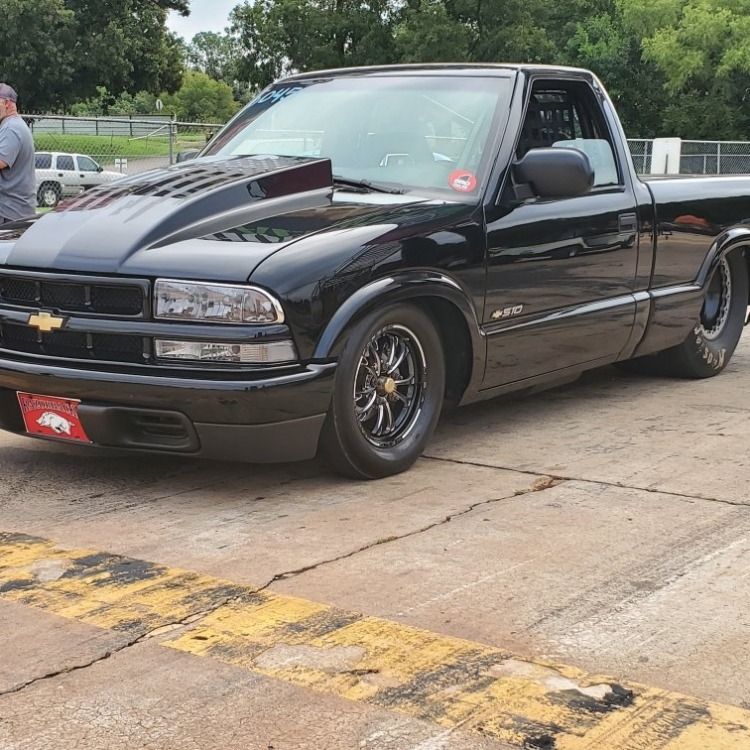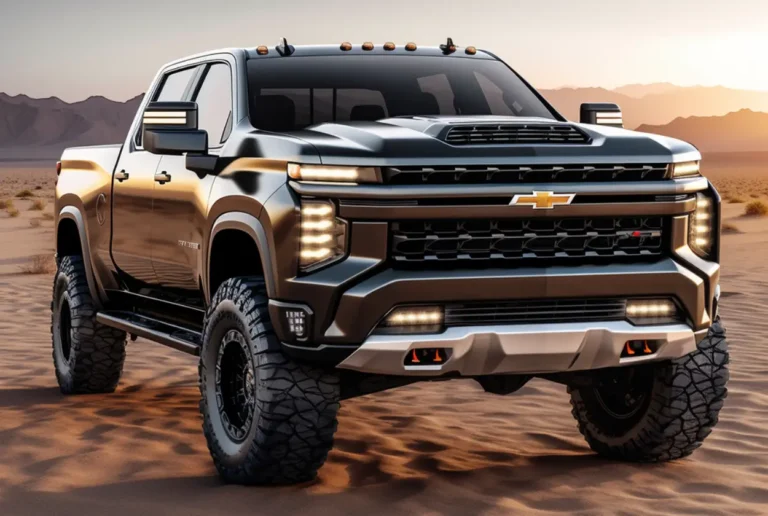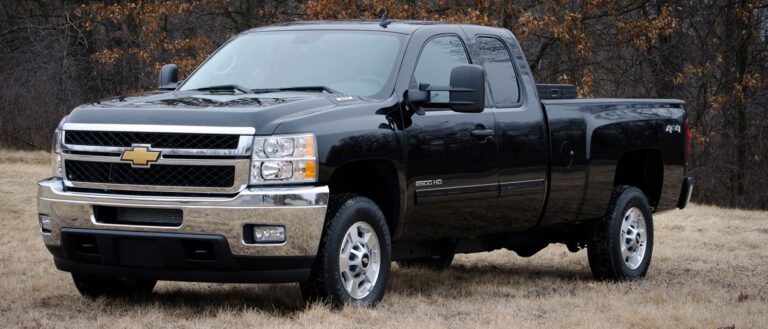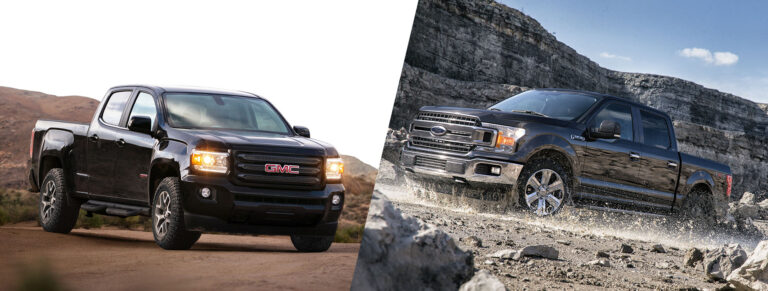Parts Of Truck: An In-Depth Guide to the Components that Power Our Roads
Parts Of Truck: An In-Depth Guide to the Components that Power Our Roads cars.truckstrend.com
The humble truck, in its myriad forms, is an indispensable workhorse of modern society. From delivering goods across continents to hauling construction materials and serving as vital emergency vehicles, trucks keep the world moving. But what makes these massive machines tick? The answer lies in the intricate interplay of thousands of individual "parts of a truck," each meticulously designed and engineered to perform a specific function. Understanding these components is not just for mechanics; it’s crucial for owners, operators, and anyone who relies on these vehicles, ensuring safety, efficiency, and longevity.
This comprehensive guide will delve deep into the essential parts of a truck, breaking down their roles, importance, and practical considerations. Whether you’re a seasoned professional or simply curious about the anatomy of these powerful vehicles, prepare to embark on a detailed exploration of what lies beneath the hood and frame.
Parts Of Truck: An In-Depth Guide to the Components that Power Our Roads
The Foundation: Chassis & Frame Components
At the very core of any truck is its chassis and frame, providing the structural backbone upon which all other components are built. This robust foundation dictates the truck’s strength, load-bearing capacity, and overall stability.
- Frame Rails & Crossmembers: These are the primary structural elements, typically made of high-strength steel, running the length of the truck. Frame rails provide longitudinal support, while crossmembers connect them laterally, creating a rigid ladder-like structure that resists twisting and bending under heavy loads.
- Axles: Essential for supporting the vehicle’s weight and transferring power to the wheels. Trucks typically have a front steer axle and one or more rear drive axles.
- Suspension System: Critical for absorbing road shocks, maintaining tire contact with the road, and ensuring a smooth ride. Components include leaf springs, coil springs, air springs (air bags), shock absorbers, and various linkages (e.g., control arms, torque rods). A well-maintained suspension system is vital for cargo protection, driver comfort, and vehicle control.
- Wheels & Tires: The direct interface with the road. Wheels (rims) support the tires, while tires provide traction, cushioning, and facilitate steering and braking. Proper tire selection, inflation, and regular inspection are paramount for safety and fuel efficiency.

Importance: The chassis and frame components dictate the truck’s fundamental capabilities. Any compromise here can lead to severe safety hazards and operational failures.
The Heartbeat: Powertrain System
The powertrain is the system responsible for generating power and transmitting it to the drive wheels, allowing the truck to move. It’s the "heartbeat" of the vehicle.
- Engine: The prime mover, converting fuel into mechanical energy. Truck engines are predominantly diesel due to their high torque output, fuel efficiency, and durability. Key components include the engine block, cylinder heads, pistons, crankshaft, camshaft, valvetrain, turbocharger (common for increased power), fuel injection system, cooling system (radiator, water pump), and exhaust system.
- Transmission: Manages the engine’s power output by allowing the driver (or the truck’s computer) to select different gear ratios. This optimizes power and torque for various speeds and loads. Transmissions can be manual (requiring a clutch pedal and gear stick) or automatic.
- Clutch (Manual Transmissions): A friction device that engages and disengages the engine from the transmission, allowing for smooth gear changes and stopping without stalling the engine.
- Driveshaft: A rotating shaft that transmits power from the transmission to the differential(s).
- Differential: A critical component in the drive axle(s) that allows the drive wheels to rotate at different speeds when turning (e.g., the outer wheel needs to travel further than the inner wheel in a turn), while still transmitting power to both.
Practical Advice: Regular oil changes, filter replacements (fuel, oil, air), and coolant checks are non-negotiable for engine longevity. For transmissions, ensure fluid levels are correct and changed as per manufacturer specifications.
The Lifesaver: Braking System
Arguably the most critical safety system, the braking system is responsible for slowing down and stopping the truck safely and efficiently, even under heavy loads.
- Air Compressor & Air Tanks: Most heavy trucks use air brakes. The compressor builds and maintains air pressure in storage tanks.
- Brake Chambers: Convert compressed air pressure into mechanical force to apply the brakes.
- Slack Adjusters: Automatically (or manually) adjust the distance between the brake chamber pushrod and the brake cam to compensate for brake lining wear, ensuring consistent brake application.
- Brake Drums/Rotors & Brake Shoes/Pads: The friction surfaces. Drums (paired with shoes) and rotors (paired with pads) are the components that create friction when pressed together, converting kinetic energy into heat and slowing the wheel.
- Anti-lock Braking System (ABS): An electronic system that prevents the wheels from locking up during braking, maintaining steering control, especially on slippery surfaces.
Important Consideration: Regular inspection of brake lines, air leaks, lining wear, and proper adjustment is vital. Any spongy pedal feel, pulling to one side, or unusual noises during braking require immediate attention.
The Navigator: Steering System
The steering system allows the driver to control the direction of the truck. Its precision and responsiveness are crucial for safe maneuvering.
- Steering Wheel & Column: The driver’s input device, connected to the steering mechanism.
- Steering Box (Gearbox): Converts the rotational motion of the steering column into linear motion to move the steering linkages.
- Power Steering Pump: Provides hydraulic assistance to reduce the effort required to turn the steering wheel, especially on heavy trucks.
- Drag Link & Tie Rods: Linkages that connect the steering box to the steering knuckles, which in turn steer the wheels.
Tips: Pay attention to any excessive play in the steering wheel, difficulty in turning, or unusual noises when steering. These could indicate worn components requiring replacement.
The Illuminator: Electrical & Lighting System
The electrical system powers everything from the engine’s ignition to the cabin’s climate control, while the lighting system ensures visibility and communication with other road users.
- Battery: Stores electrical energy for starting the engine and powering accessories when the engine is off.
- Alternator: Generates electrical power while the engine is running, recharging the battery and powering the electrical systems.
- Starter Motor: An electric motor that cranks the engine to start it.
- Wiring Harnesses: Bundles of wires that distribute electrical power and signals throughout the truck.
- Lights: Headlights, taillights, brake lights, turn signals, marker lights, fog lights – all essential for visibility and signaling intentions.
- Electronic Control Units (ECUs/ECMs): The "brains" of the truck, controlling various systems like the engine, transmission, brakes, and emissions.
- Dashboard Instruments & Sensors: Provide the driver with critical information about the truck’s operational status (speed, RPM, fluid levels, warning lights).
Challenges: Electrical issues can be notoriously difficult to diagnose due to complex wiring and interconnected systems. Regular checks of battery terminals, light functionality, and dashboard warning lights are good preventative measures.
The Command Center: Cabin & Interior Components
While often overlooked in terms of "parts," the cabin is where the driver spends countless hours, making its components vital for comfort, safety, and operational control.
- Seats: Ergonomically designed to provide comfort and support during long drives, often with air suspension for heavy trucks.
- Dashboard & Instrument Panel: Houses gauges, indicators, and warning lights, providing vital operational data.
- Controls: Pedals (accelerator, brake, clutch), gear shifter, steering wheel-mounted controls, switches for lights, wipers, HVAC, and specialized equipment.
- Heating, Ventilation, and Air Conditioning (HVAC) System: Maintains a comfortable cabin temperature.
- Safety Features: Seatbelts, interior lighting, mirrors, and increasingly, advanced driver-assistance systems (ADAS) like lane departure warnings and collision mitigation systems.
Benefits: A well-maintained and comfortable cabin reduces driver fatigue, improves focus, and contributes significantly to overall road safety.
Specialized & Ancillary Components
Beyond the core systems, trucks often feature specialized parts tailored to their specific applications.
- Fifth Wheel: For semi-trucks, this is the coupling device that connects the tractor to the trailer, allowing for articulation and power transfer.
- Trailer Connectors: Electrical and air lines that connect the truck’s systems to the trailer’s brakes, lights, and other electrical components.
- Hydraulic Systems: Common in dump trucks, cranes, and refuse vehicles, these systems use hydraulic fluid under pressure to power cylinders and motors for lifting, tilting, or operating specialized equipment.
- Power Take-Off (PTO): A mechanism that allows an auxiliary drive shaft to be connected to the truck’s engine or transmission, providing power for external equipment (e.g., pumps, generators, winches).
- Cargo Bodies: The specific structure designed to carry the load, such as flatbeds, box bodies, tankers, dump bodies, or specialized refrigerated units.
Actionable Insights: Always ensure that specialized equipment is regularly serviced according to its manufacturer’s guidelines, as failures in these systems can be costly and dangerous.
Practical Advice for Truck Part Management
- Regular Inspections & Maintenance: This is the golden rule. Adhere strictly to manufacturer-recommended service schedules. Pre-trip and post-trip inspections are invaluable for catching minor issues before they become major problems.
- Quality Over Cost: While aftermarket parts can be cheaper, investing in genuine OEM (Original Equipment Manufacturer) or high-quality aftermarket parts often pays dividends in terms of reliability, performance, and longevity.
- Understand Your Truck’s Manual: It’s a treasure trove of information regarding maintenance schedules, fluid types, and troubleshooting.
- Listen to Your Truck: Unusual noises, vibrations, smells, or dashboard warning lights are the truck’s way of communicating a problem. Don’t ignore them.
- Professional Assistance: For complex diagnostics or repairs, rely on certified mechanics with expertise in truck systems.
Challenges and Solutions
- Sourcing Reliable Parts: The market is flooded with various options. Solution: Establish relationships with reputable dealers and parts suppliers known for quality and service.
- Cost of Replacement Parts: Truck parts can be expensive, especially for major components. Solution: Implement a proactive maintenance schedule to prevent premature wear and catastrophic failures. Budget for unexpected repairs.
- Complexity of Systems: Modern trucks are highly computerized and integrated. Solution: Invest in diagnostic tools if performing self-maintenance, or rely on professional mechanics with up-to-date diagnostic equipment and training.
- Downtime: A truck out of commission means lost revenue. Solution: Maintain a small inventory of common wear-and-tear parts, and have a trusted repair facility on standby for quicker turnarounds.
Sample Price Table for Common Truck Parts
Please note: Prices for truck parts vary significantly based on the truck’s make, model, year, engine type, part brand (OEM vs. aftermarket), supplier, and region. The prices below are illustrative estimates only and should not be considered definitive.
| Part Category | Specific Part | Estimated Price Range (USD) | Notes |
|---|---|---|---|
| Engine Components | Diesel Fuel Injector | $200 – $800+ (each) | Varies greatly by engine make/model |
| Turbocharger | $800 – $3,000+ | New vs. Remanufactured, engine size | |
| Water Pump | $150 – $400 | Essential for cooling system | |
| Braking System | Brake Shoe Set (Axle) | $80 – $250 | For drum brakes, per axle |
| Brake Drum | $150 – $400 | Per drum, heavy-duty | |
| Air Brake Chamber | $100 – $350 | Single or double diaphragm | |
| Suspension | Leaf Spring (Single) | $200 – $800+ | Varies by length, arch, and load capacity |
| Air Spring (Air Bag) | $150 – $500 | For air suspension systems | |
| Shock Absorber | $50 – $150 | Per unit | |
| Drivetrain | Clutch Kit (Manual) | $400 – $1,500+ | Includes disc, pressure plate, release bearing |
| Driveshaft U-Joint | $30 – $100 | Per joint | |
| Electrical | Truck Battery (Group 31) | $100 – $250 | Typical heavy-duty truck battery |
| Alternator | $250 – $800+ | New vs. Remanufactured | |
| Starter Motor | $200 – $700+ | New vs. Remanufactured | |
| Steering | Power Steering Pump | $150 – $500 | New vs. Remanufactured |
| Tie Rod End | $40 – $150 | Per end, inner or outer | |
| Misc./Body | Headlight Assembly | $100 – $500+ | Varies by truck model and technology |
| Fifth Wheel Rebuild Kit | $200 – $600 | For repairing existing fifth wheels |
Frequently Asked Questions (FAQ)
Q1: What are the most common truck parts that need replacement?
A1: Common wear-and-tear parts include tires, brake shoes/pads, brake drums, air filters, fuel filters, oil filters, belts, hoses, and various suspension components like shock absorbers and air springs. Electrical components like batteries, alternators, and starter motors also have finite lifespans.
Q2: Should I use OEM (Original Equipment Manufacturer) or Aftermarket parts?
A2: OEM parts are made by the original manufacturer of the truck or a trusted supplier, guaranteeing a perfect fit and performance identical to the original. Aftermarket parts are produced by other companies. While often more affordable, their quality can vary. For critical components (brakes, engine parts), OEM or high-quality aftermarket brands are recommended. For less critical items, a reputable aftermarket part can be a cost-effective choice.
Q3: How often should I inspect truck parts?
A3: Daily pre-trip and post-trip inspections are crucial for basic checks (tires, lights, fluid leaks, brakes). More detailed inspections should be performed during routine maintenance, typically every 10,000-25,000 miles or quarterly, depending on the truck’s usage and manufacturer recommendations.
Q4: Can I replace truck parts myself?
A4: Basic maintenance like changing filters, checking fluid levels, or replacing light bulbs can often be done by a knowledgeable owner. However, for complex repairs involving the engine, transmission, braking system, or steering, specialized tools, diagnostic equipment, and expertise are required. It’s best to leave these to certified truck mechanics to ensure safety and proper functionality.
Q5: Where can I buy reliable truck parts?
A5: Reliable sources include authorized truck dealerships (for OEM parts), reputable independent truck parts suppliers, and online heavy-duty truck parts retailers known for their quality and customer service. Always check reviews and ensure they offer warranties on their products.
Conclusion
The intricate world of truck parts is a testament to sophisticated engineering, where every component plays a vital role in the vehicle’s overall performance, safety, and reliability. From the foundational frame to the smallest electrical sensor, understanding these parts empowers truck owners and operators to make informed decisions regarding maintenance, repairs, and upgrades. By prioritizing quality parts, adhering to rigorous maintenance schedules, and addressing issues promptly, we ensure that these indispensable machines continue to operate safely and efficiently, keeping the gears of commerce and society turning. The truck is more than just a vehicle; it’s a complex ecosystem of interconnected parts, each contributing to its immense capability and unwavering purpose.





